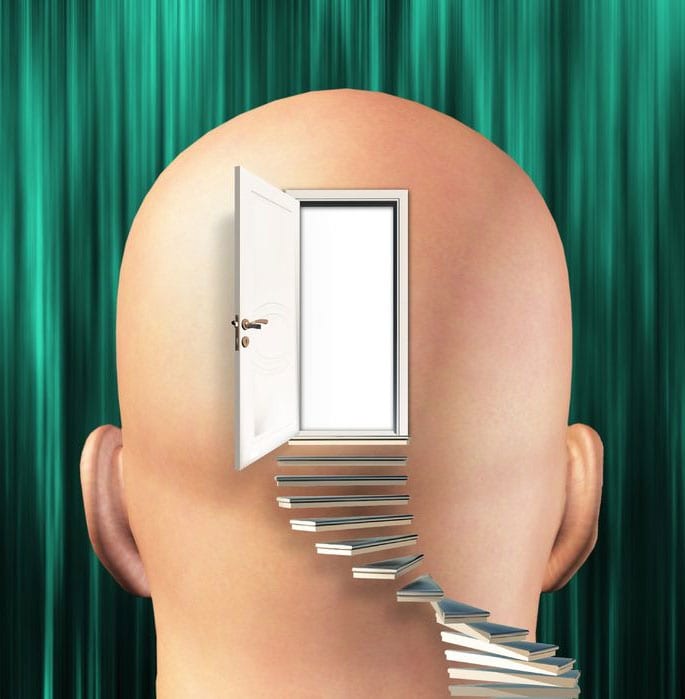In this article we will see how to learn to meditate in a simple, practical and very effective way.
First of all, there are several types of meditation: mindfulness, meditation focused on the breath, focused on developing a quality such as compassion, ...
Here we are going to see a simple and basic meditation. We are going to make a compilation of 11 steps that will help you enter an optimal state of relaxation. Let's start with a video.
Before seeing these 11 steps that will take you to an optimal state of relaxation, I leave you this YouTube video that is one of the best I have found and in which it shows us how we can do a meditation centered on the breath:
[You may be interested 5 Meditation Tips for Beginners]
11 tips with which we will learn to meditate

1) Choose a suitable place to meditate.
Try to always do it in the same place. It's about establishing a routine, a habit. Always doing it in the same place will help you to better implement this habit.
It can be a special room in your house. In any case, maintain a harmony in the chosen place, that is, that it is an orderly, clean place and that the decoration invites you to meditate. You can place some decorative elements such as a Buddha figure, a censer, ...
2) Choose a cushion to sit on.
Always have that cushion handy and dedicate it exclusively to meditate. The meditation that we are going to teach you today here we are going to do sitting down, no lying down that we can sleep and we fall asleep 🙂
3) We are going to adopt a specific posture known as the Vairochana posture.
We are going to carry out this position to the extent possible. If you do not have the necessary flexibility, adopt a posture in which you feel comfortable and your spine is straight and aligned with your back.
What is the Vairochana posture?

* The legs are intertwined. This is used as a symbol that allows you to eliminate thoughts and attachment to things.
* The posture of the hands it is also very important. The right hand must be on the left hand and both must be up. They are placed below the navel. This is done to help us focus.
* The posture of the back it is also important. It has to be straight but without tension. It helps us to clarify the mind.
* Language it has to touch the inside of the upper teeth so that we salivate less.
* Head position it is also important. It should be leaning slightly forward and with the chin slightly inward. This position also calms the mind.
* The eyes must be squinted, that is, we should not close them completely and our gaze is directed towards the lower part of our body. The explanation is logical. If we keep our eyes open we can over-stimulate the mind and if we close them we can become numb.
4) We begin to be aware of our thoughts.
Perhaps our mind is abuzz with thoughts that come and go. We should only limit ourselves to be aware of each of them, even if they are chaotic. We don't judge them, we just watch them. We can spend a couple of minutes on this step.
5) We begin to be aware of our breathing.
We try to be aware of when we inhale and when we exhale. If intrusive thoughts appear, we let them pass. We don't get discouraged and continue to focus on the breath.
6) We give meaning to our breath.
Every time we exhale we imagine that we are expelling all our negative thoughts. It is as if it were a black and toxic smoke that comes out of our mouth. On the contrary, when we inhale, we imagine that we are introducing a lot of positive energy into our body, energy that floods our lungs and spreads throughout our body.
This will help us focus on our breathing.
7) Now we are going to focus on our nostrils.
Feel the breath in this part of your body. Get the feeling that occurs with the entry and exit of air through your nostrils.
8) Now we are going to use a mantra.
Every time we inhale we will emit a mental sound that will be 'SW' and we will emit the sound 'HAM' when we exhale. I repeat, the sound has to be mental. When we are aware that something is distracting us we will return to the mantras 'SO' and 'HAM'.
9) Now we are going to stop repeating the mantras and we are going to focus our attention on the heart.
We put all our attention in the center of the chest and we are going to feel our heartbeat, either as a sound or as a sensation. Let's mentally tell our heart to slow down.
Now we focus our attention on the hands and feel our heart in them. If we feel that our heart beats in our hands, it is likely that we can feel heat or tingling in them.
What we are doing is slow down our heart rate and increase blood flow in our hands.
10) Now we are going to think about a part of our body that we need to heal.
If you don't think you need physical healingWe all need emotional healing so focus on that emotion you want to change.
11) To finish we take some deep breaths.
We are already nearing the end of our meditation. We take a few deep breaths and very slowly we fully open our eyes. Take your time.
You can finish the meditation practicing the value of gratitude. Give thanks for all the good things that you have, that surround you and for those to come 🙂
I want to practice tomorrow at midnight.